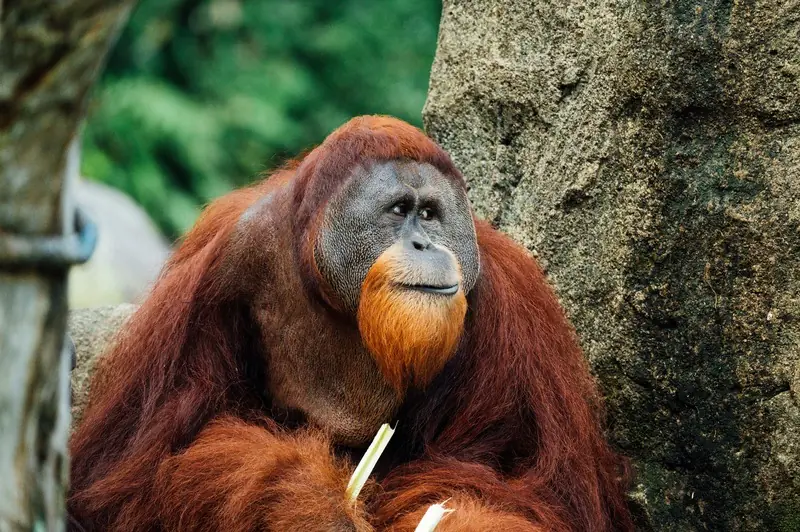Unfiltered, Rich, and Enchanting
Imagine drifting down a jungle river as the sun breaks through misty treetops. The sound of birdsong echoes across the water. Then, from the canopy above, a rust-furred orangutan swings into view, pausing for just a moment to meet your gaze. This isn’t a scene from a documentary — it’s Kalimantan, the untamed heart of Indonesian Borneo.
Covering nearly a third of Indonesia’s land but home to just a sliver of its people, Kalimantan is wild, vast, and almost untouched. Days can pass without seeing another traveller. Instead of traffic, there are twisting rivers. Instead of hotels, there are stilted villages hidden in the trees. Here, the jungle isn’t a backdrop — it’s the star of the show.
Attractions and cultural highlights
Hop aboard a traditional klotok boat and follow the lifelines of the island — its snaking rivers. As you glide deeper into the green, you’ll pass mangrove labyrinths and thick rainforest walls alive with movement. On shore is a whole new, different realm.
Dayaks are the guardians of the forest
The Dayak people, the original inhabitants of Borneo, live deep within Kalimantan’s jungles—keepers of rituals, legends, and stories passed down through generations. With eye-catching tattoos, elaborate costumes, and towering longhouses, the Dayak are as fascinating as the forests they protect. Though modern influences have reached many communities, their traditional customs, dances, and beliefs still thrive. You can experience their world firsthand by visiting cultural sites such as Pampang Cultural Village in East Kalimantan, Loksado in South Kalimantan, and longhouses along the Kapuas River. Stay overnight, share a meal, join in a dance—and you’ll leave with more than just memories.
Dive into paradise - the Derawan Islands
Kalimantan isn’t just about forests. Its underwater world is just as spellbinding. Off the coast of East Kalimantan lies the Derawan Archipelago, a diver’s dream and one of the best-kept secrets in Indonesia. Here, the sea turns from emerald to deep blue, hiding a wonderland of manta rays, turtles, dolphins, dugongs, barracudas, and even stingless jellyfish you can swim with at Kakaban Island. Sangalaki is renowned for manta sightings, and Maratua is a hotspot for rare species like blue-ringed octopus, pygmy seahorses, and ghost pipefish. These are the top islands worth exploring.
Epic Cross-Borneo trek
Ready to take it to the next level? The Cross-Borneo Trek is one of Southeast Asia’s most adventurous journeys. This route takes you from East to West Kalimantan—starting by boat along the Mahakam River, hiking over the Mueller Mountains, and then floating down the mighty Kapuas River, the longest river in Indonesia. It’s three experiences in one: river expedition, jungle trek, and cultural immersion. Along the way, you’ll pass remote villages, spot rare wildlife, and get deep into the heart of Borneo—far from roads, phones, or crowds.
Meet the orangutan and friends
No trip to Kalimantan is complete without coming face-to-face with its most famous resident, the orangutan. These intelligent, expressive primates are icons of Borneo, swinging gracefully through the canopy or lounging in the trees, just watching the world go by. Beyond orangutans, Kalimantan’s rainforests are home to an incredible cast of characters: proboscis monkeys with their comical noses, elusive honey bears, hornbills, wild boars, and even the mythical arowana fish.
To see them in the wild, head to one of the island’s national parks in the soul of Borneo:
- Tanjung Puting and Sebangau in Central Kalimantan
- Mount Palung and Lake Sentarum in the west
- Kutai in the east
- Kayan Mentarang in the north
Singkawang is the City of a Thousand Temples
Singkawang, West Kalimantan, adds an unexpected twist to your journey. The City of a Thousand Chinese Temples embodies a unique blend of Chinese-Indonesian heritage wrapped in colourful pagodas, red lanterns, and incense-filled streets.
Time your visit with Cap Go Meh, the dazzling grand finale of Chinese New Year, and you’re in for a show. During this electrifying festival, Tatung shamans perform jaw-dropping feats—piercing their cheeks with metal rods, walking on blades, and bending swords with their bodies. It’s raw, powerful, and unlike anything you’ve ever seen.
Best Times to Visit Borneo (Kalimantan)
Dry Season: May to September — Best time for jungle treks, wildlife spotting (especially orangutans), river cruises, and cultural visits to Dayak villages. Expect mostly sunny days and easier access to remote areas. July and August are peak months, so popular sites like Tanjung Puting National Park can get busier — book early if you plan to visit during this window.
Rainy Season: November to March — The rainforest is at its lushest and greenest, but heavy rain can make some trails muddy and river transport slower. Fewer tourists mean more intimate wildlife experiences, and it's still possible to visit national parks, though flexibility is key due to weather-related delays.
Shoulder Season: April and October — These transitional months offer excellent opportunities for orangutan encounters, forest treks, and even diving off the coast of East Kalimantan (Derawan Islands). October is especially ideal for both land and sea adventures.
Accommodation
Luxury resorts: Shangri-La Rasa Ria, Mulu Marriott Resort & Spa.
Mid-range hotels: Fugo Hotel Samarinda, Mercure Pangkalan Bun.
Budget-friendly options: Guesthouses and homestays.
Borneo (Kalimantan) travel essentials
Exploring the wild, jungle-cloaked heart of Borneo is an adventure like no other, but knowing a few key tips will help you travel responsibly, comfortably, and with a deeper connection to the land and its people.
1. Stick to breathable clothing, quick-dry fabrics, and earth-tone colours. A rain jacket, mosquito repellent, and sturdy waterproof shoes are must-haves — jungle weather is unpredictable.
2. The Dayak people are welcoming, but modesty is appreciated. Dress conservatively in villages, ask before taking photos, and follow local etiquette — your curiosity should come with courtesy.
3. ATMs can be scarce in remote areas, and many places don’t accept cards. Bring enough Indonesian Rupiah (IDR) in small denominations for local purchases and tips.
4. Signal fades quickly once you’re outside major towns. Embrace the digital detox — it’s part of the charm. Download offline maps and translate tools before heading off-grid.
5. Always book with eco-conscious guides and operators who protect orangutans, support local communities, and avoid exploitative practices (i.e. wildlife selfies or touching animals).
6. Traditional klotok boats are your jungle taxis. Bring earplugs (they can be noisy), a power bank, and dry bags to keep your gear safe on the water.
7. Bottled water is a must. Try local delicacies like sago-based dishes, jungle fruits, and fresh river fish — but eat hot and freshly cooked food to avoid stomach issues.
8. Never feed, touch, or chase animals — especially orangutans. Keep a respectful distance and let them behave naturally in their habitat. Silence and patience pay off.
9. The rainforest is beautiful but buggy. Pack DEET-based repellent, long sleeves for evenings, and anti-itch cream. A travel towel and quick-dry clothes will help you stay fresh.
10. Take everything you bring in, out — including trash. Don’t take shells, feathers, or forest souvenirs. What’s wild should stay wild.
Kalimantan is a living, breathing expedition. Nature isn’t something you watch from afar. It’s something you feel, hear, and carry home with you long after the journey ends. And it’s calling your name. Will you answer to it? Read the articles below for more details.
Must-Visit Kalimantan: Wildlife. Beaches, and Tradition
Balikpapan City Guide: Top Spots to Eat, Drink & Explore
Tales of Indonesia: Tranquil Derawan





 Apr 12, 2025
Apr 12, 2025